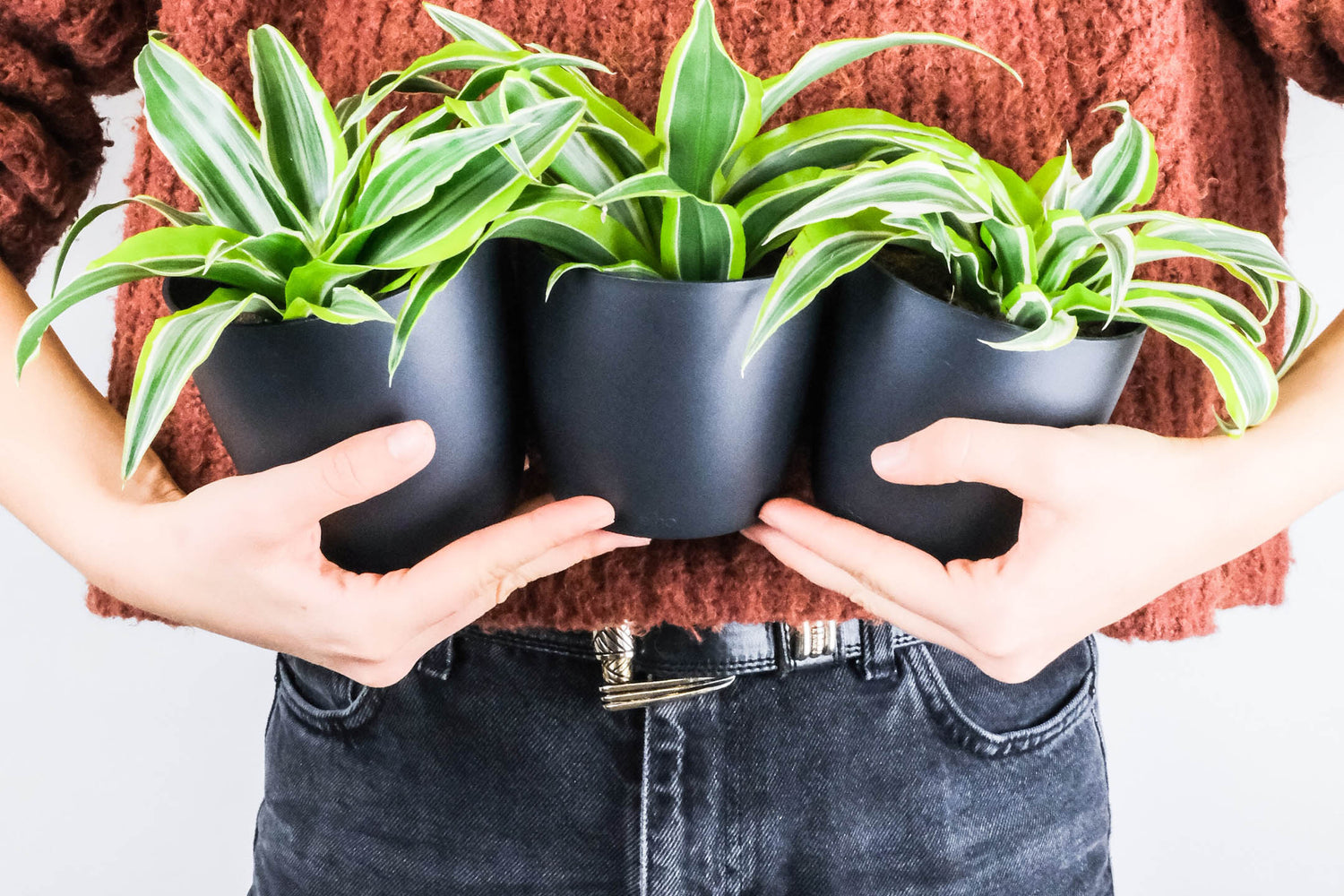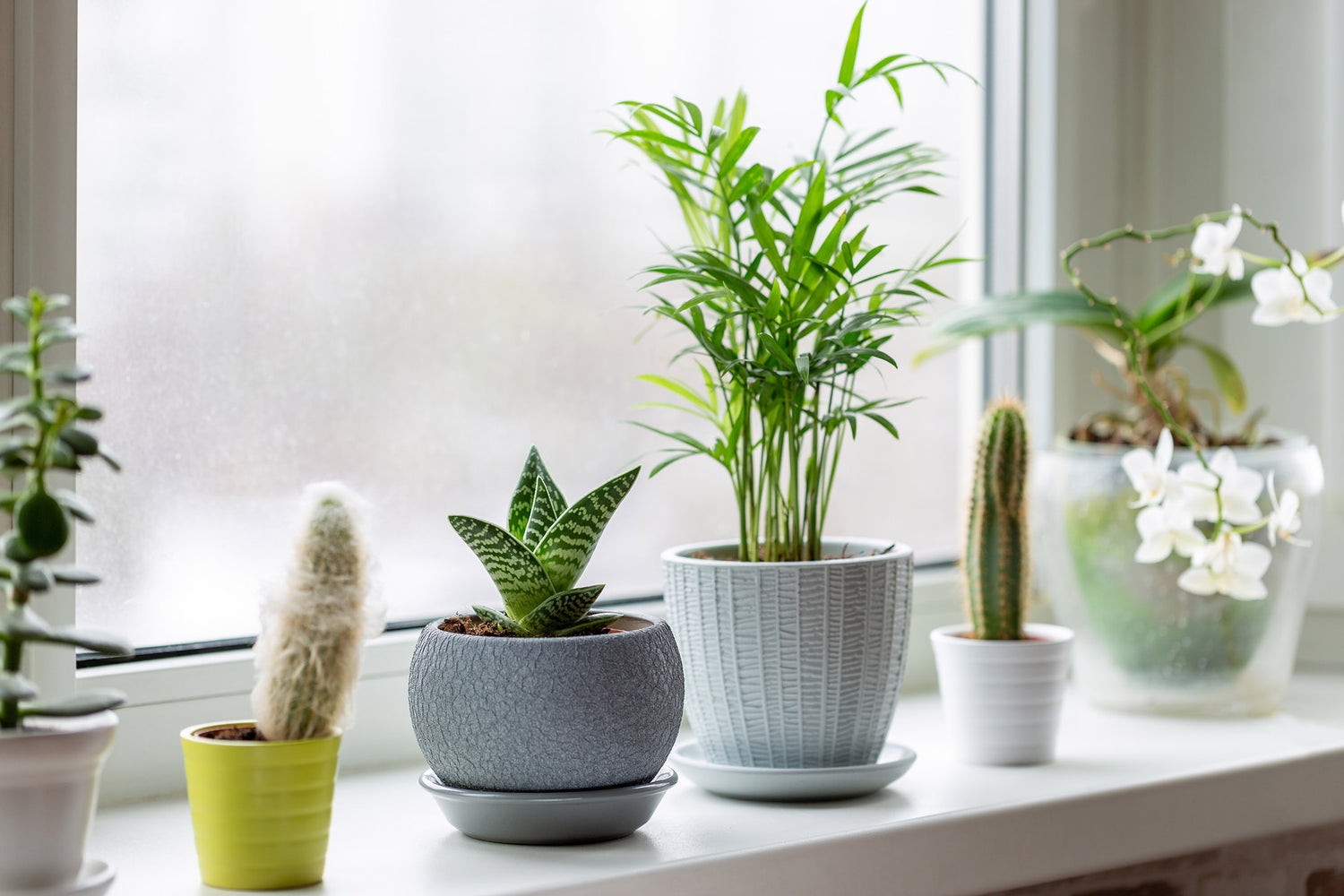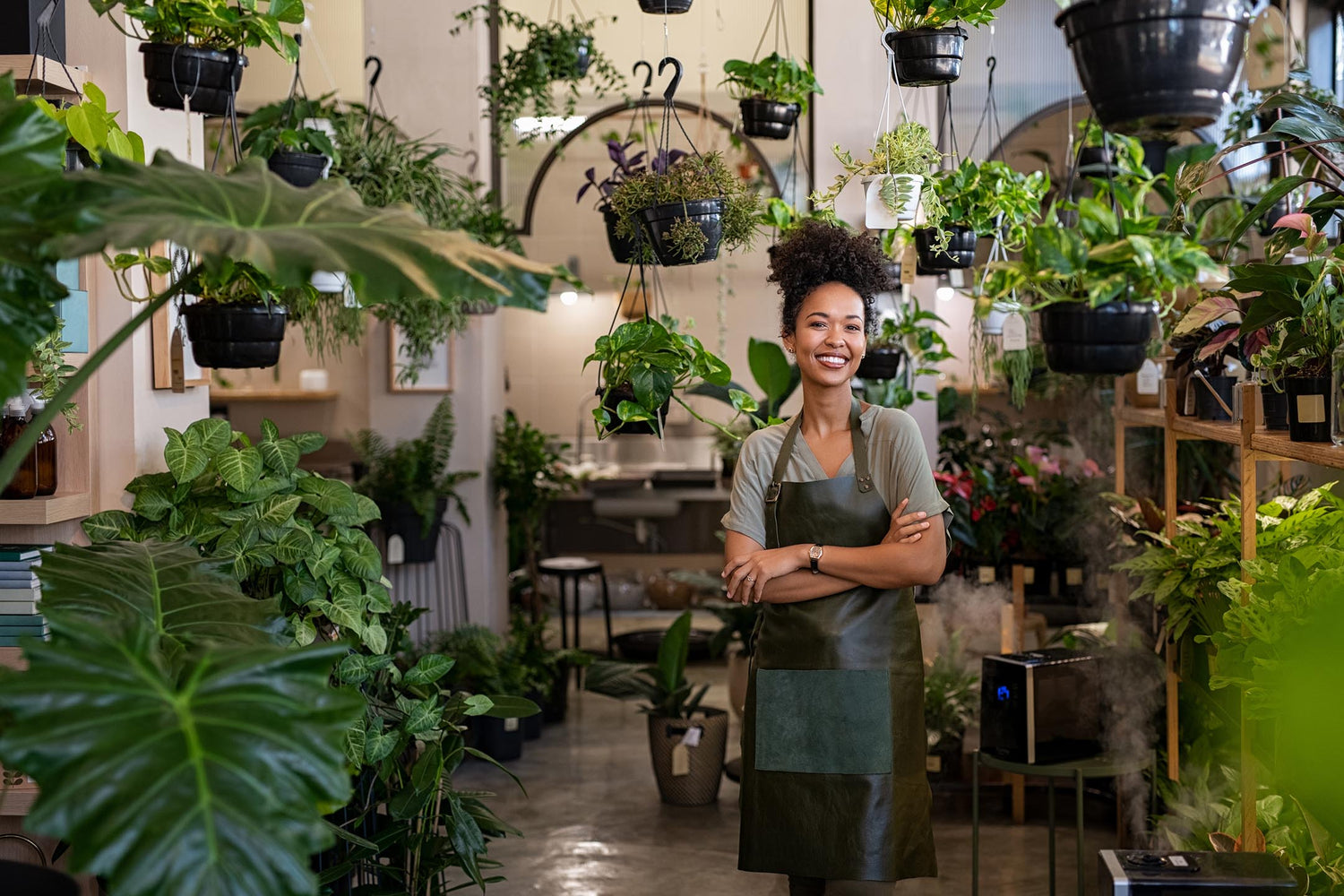With so many pretty and stylish plant pots available in a range of materials, it’s not surprising that many of us are hoping to find the best solution to make our houseplants look stylish.
But can you plant houseplants in a metal container? Metal LOOKS super chic and offers a sleek and minimal style but is it actually a healthy planting option for houseplants?
Let’s start with the mini brief first so you know the most basic answer right away.
"You CAN plant houseplants in metal containers. Metal is durable, stylish, and long-lasting, but is prone to rust. Make sure you have adequate drainage, plant in plastic or fiber pots before setting in metal, and keep metal containers out of direct sunlight to avoid burning the plant and soil."
Ok so with the short answer in mind, let’s first start by finding out exactly what kind of metal containers are best used for houseplants.
What Kind Of Metal Containers Are Used For Houseplants?
There are many different kinds of metal containers that can provide a unique and creative planting environment for any room in your home!
A trough-shaped container for example is really popular! This shape works great for creating a focal point of greenery on your kitchen island or on a long rectangular dining room table. Check out these other options below.
Unlikely Metal Plant Container Options
Get creative with metal. Chances are there is a range of metal containers in your home right now that you can use for planting. Consider:
- Large and smaller troughs
- Buckets - old and new
- Repurposed metal such as watering cans
- Household items such as colanders
- A stock pot or other cooking pot
- Measuring cup
- Vintage soup cans
With a wealth of different kinds of metal containers, you can get really creative with how you display your indoor plants.
Repurposing is as fashionable now as it has been in the last decade, so don’t be afraid to get creative! Maybe you’ve got some vintage garden metal wear that would be suitable, such as an old bucket or watering can.
Vintage metal kitchen wear brings a real unique look to your home decor and can be available for pennies in thrift stores.
Types Of Metal Containers For Houseplants

Shop Braid & Wood's Collection of Spun Aluminum Vessels
The three most popular metal containers for plants are aluminum, galvanized steel, and copper. There is also a wealth of beautiful metallic finishes such as silver, brushed metal, and gold to bring a touch of luxe to your indoor planting.
- Galvanized Steel - the most popular type of metal containers are those made from galvanized steel. They have a coating of zinc to slow down the rusting process
- Copper Containers- untreated copper containers do tarnish eventually with a greenish cast, but they are durable and don’t break or crack.
- Aluminum - aluminum pots are non-reactive, which means they won't leach chemicals or harmful substances into the soil or the plants. This can be particularly important for plants that are sensitive to certain chemicals or minerals, as well as for those that require specific pH levels in the soil.
Advantages Of Metal House Plant Containers
- Unique: Metal planting containers are unusual choices that create a unique look in your home as an attractive accent piece.
- Easy To Plant In: Metal containers are light, durable, and ready-made for planting.
- Develop An Attractive Worn Look: Metal containers often develop a wonderful worn patina over time. A copper pot, for example, may develop a modern green finish.
- Perfect For Repurposing: Many old metal items are available at thrift shops and second-hand stores that can be repurposed as planting containers.
- Long-Lasting: Although some metal containers may gradually rust or corrode over time, metal containers often last for many, many years.
“Metal containers are light, durable, and ready-made for planting.”
Disadvantages Of Metal House Plant Containers
- Heat: Metal can get searingly hot in the sun, which can stress your plants. Heat can also dry out the soil very quickly.
By placing your metal container in shady locations in your home, and out of direct sunlight it will reduce the glare and eliminate the heat that might damage your houseplants. There are a couple of ways to get around this problem.
To help insulate the roots and the soil you could use bubble wrap. If you are in a very hot climate, however, it may even melt the bubble wrap so check it regularly or use newspaper instead.
Lastly, make sure you choose plants that are better suited to warmer climates locations and prefer dry, warmer soil such as succulents, which can tolerate the heat or air plants such as Brachycaulos Exserta.
You can further avoid issues with metal and heat by planting your houseplant in a fiber or plastic pot first, then sitting your pot on newspaper in the bottom of your metal container.

- Rust: As planters are typically exposed to water, they are inclined to rust. When you think of rust, metal is one of the first materials to come to mind.
Certain types of metal are notorious for rusting, and your metal planters won’t be any different. If you want to avoid rust then we recommend sticking with these types of metal for your planters.
Type of Metal Planters That Will Not Rust
- Stainless Steel: Stainless steel is a type of steel that contains chromium, which reacts with oxygen to form a thin, protective layer of chromium oxide on the surface. This layer prevents further rusting and corrosion.
- Aluminum: Aluminum naturally forms a thin layer of oxide on its surface, which provides protection against rusting.
- Copper: Copper does not rust, but it can form a greenish patina over time due to exposure to air and moisture.
- Brass: Brass is an alloy of copper and zinc and does not rust, but like copper, it can develop a patina over time.
- Bronze: Bronze is an alloy of copper and tin and is highly resistant to rusting due to the presence of tin.
- Galvanized Steel: Galvanized steel is steel that has been coated with a layer of zinc, which provides protection against rusting.
“Metal can get searingly hot in the sun, which can stress your plants and also dry out the soil very quickly. Be sure your metal planters are kept in a shady spot.”
If you want to grow some kitchen herbs on your windowsill or even display your favorite basil plant in your home office, you might be wondering if it’s safe to put plants you will eat in metal containers.
Read on to find out more.
Are Metal Containers For House Plants & Herbs Safe?
Some people are nervous about planting herbs or vegetables in galvanized pots because of the health hazards associated with zinc.

While it’s true that zinc can be toxic if consumed or breathed in, the danger of growing an indoor herb garden in a metal container is very low.
In fact, in many areas, drinking water supplies have been, and sometimes still are, carried by galvanized pipes.
The amount of zinc that might come through your plants’ roots and into your herbs or vegetables is minimal.
Top Tips For Displaying Houseplants In Metal Containers
- Add Absorbent Materials: To stop your metal containers from overheating, add a coffee filter or newspaper to safely absorb some of the heat.
- Plant Inside Another Container: Rather than plant directly into a metal container, you can use a fiber or a plastic plant pot nestled in that will already have the necessary drainage holes. Avoid plastic ‘display’ containers which won’t usually have drainage areas added. If you want to make draining even easier, line the bottom of the container with a few inches of wood chips or gravel
- Use a Can Opener to Add Drainage Holes: Metal is nonporous which means it will not drain naturally. So even if you overwater your plants a tiny bit, it will eventually pool and build up in the bottom of the planter.
One of our best tips for adding necessary drainage if you are planting directly in a metal container is to use a can opener to add the necessary holes. You can also knock holes in the bottom with a hammer and large nail (take care with this option and make sure you stay safe). The more drainage your metal container has, the better it is to keep your houseplants healthy and happy.
- Find Cheap Metal Containers: For displaying plants in metal containers for a larger indoor area, such as an atrium or even a conservatory head down to your local farm or headwear store to find inexpensive container solutions.
- Visit Thrift Shops: Collect pretty metal cans and vintage metal kitchenwares from thrift shops, and source on social marketplaces, such as Facebook. You might find a bargain!
- Line a Vintage Colander: If using a colander, you can either line it with plastic or if you want to keep a more natural feel, moss is a perfect choice. Line your metal container and make sure to pop in some drainage holes.
And Finally…
So we hope that’s given you the complete run down on whether you can use metal containers successfully for your house plants! Don't forget to check out our collection of beautiful spun aluminum vessels in our shop!






